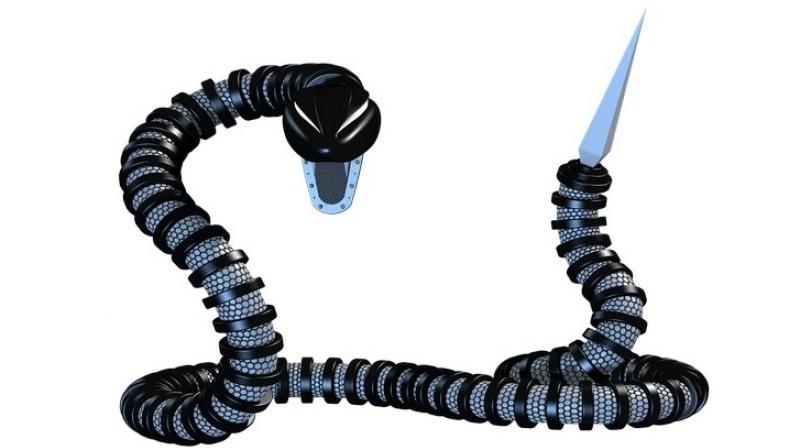This snake-inspired soft robot is faster, more precise than its predecessor
25 April, 2019

The researchers have developed a new and improved snake-inspired soft robot that is faster and more precise than its predecessor.
The details were published in the Journal of National Academy of Sciences.
The robot is made using kirigami -- a Japanese paper craft that relies on cuts to change the properties of a material. As the robot stretches, the kirigami surface pops up into a 3D-textured surface, which grips the ground just like snakeskin.
The first-generation robot used a flat kirigami sheet, which transformed uniformly when stretched. The new robot has a programmable shell, meaning the kirigami cuts can pop up as desired, improving the robot's speed and accuracy.
The new research combined two properties of the material -- the size of the cuts and the curvature of the sheet. By controlling these features, the researchers were able to program the dynamic propagation of pop-ups from one end to another or control localised pop-ups.
"This is the first example of a kirigami structure with non-uniform pop-up deformations. In flat kirigami, the pop-up is continuous, meaning everything pops at once. But in the kirigami shell, pop up is discontinuous. This kind of control of the shape-transformation could be used to design responsive surfaces and smart skins with on-demand changes in their texture and morphology," said Ahmad Rafsanjani, first author of the paper.
In this research, the kirigami surface is rolled into a cylinder, with an actuator applying force at two ends. If the cuts are a consistent size, the deformation propagates from one end of the cylinder to the other. However, if the size of the cuts is chosen carefully, the skin can be programmed to deform at desired sequences.
"By borrowing ideas from phase-transforming materials and applying them to kirigami-inspired architected materials, we demonstrated that both popped and unpopped phases can coexist at the same time on the cylinder," said Katia Bertoldi, senior author of the paper.
